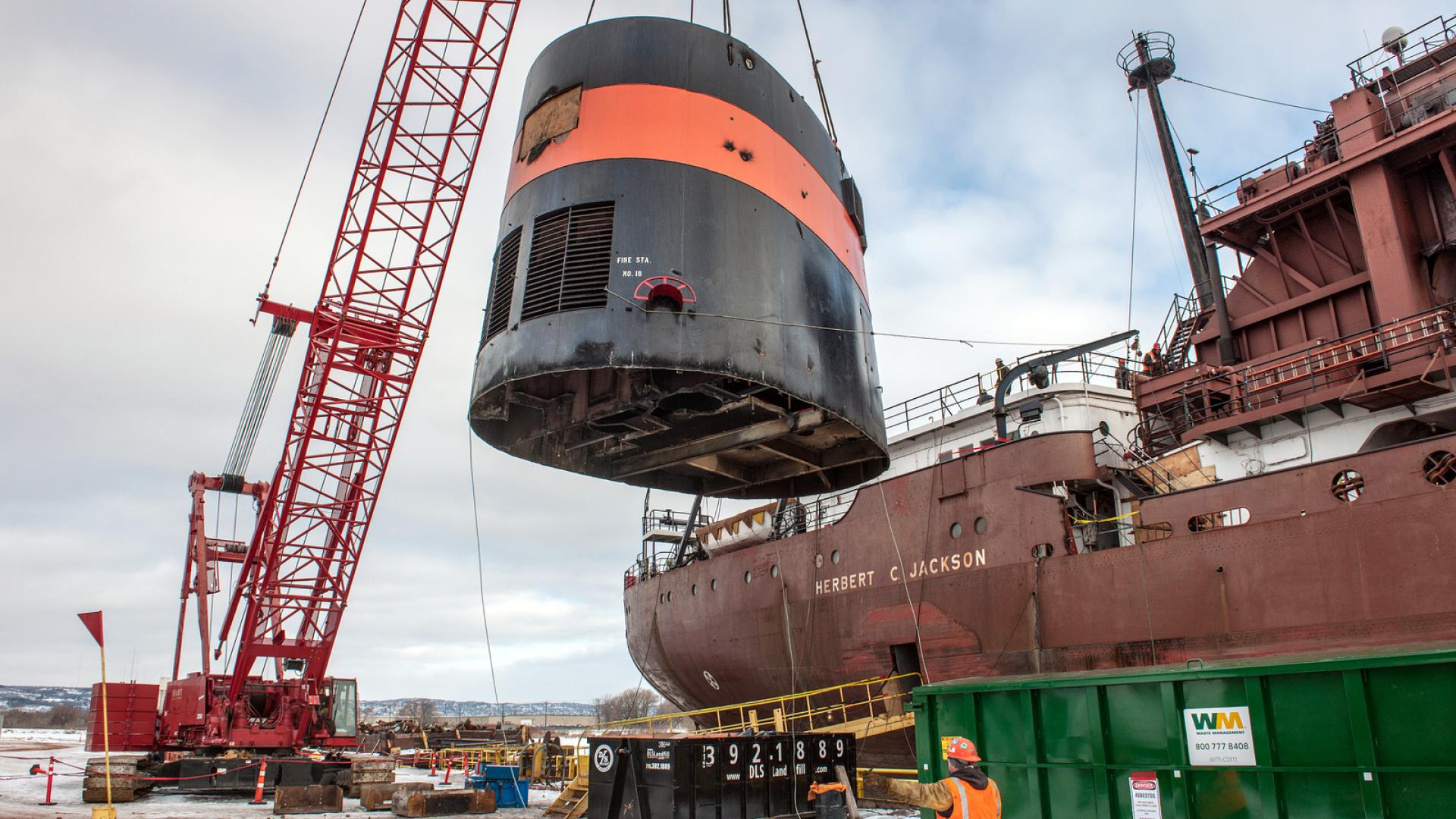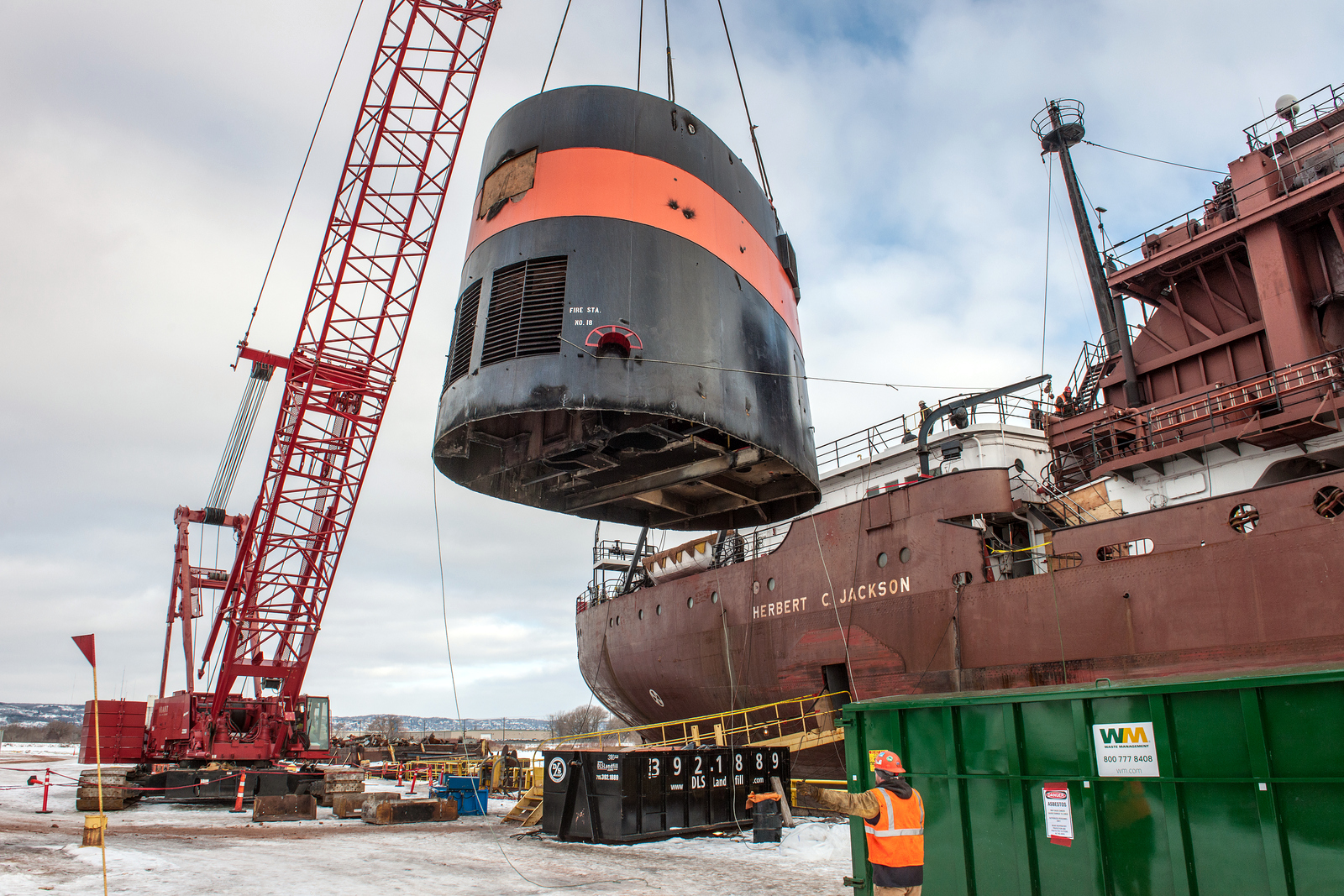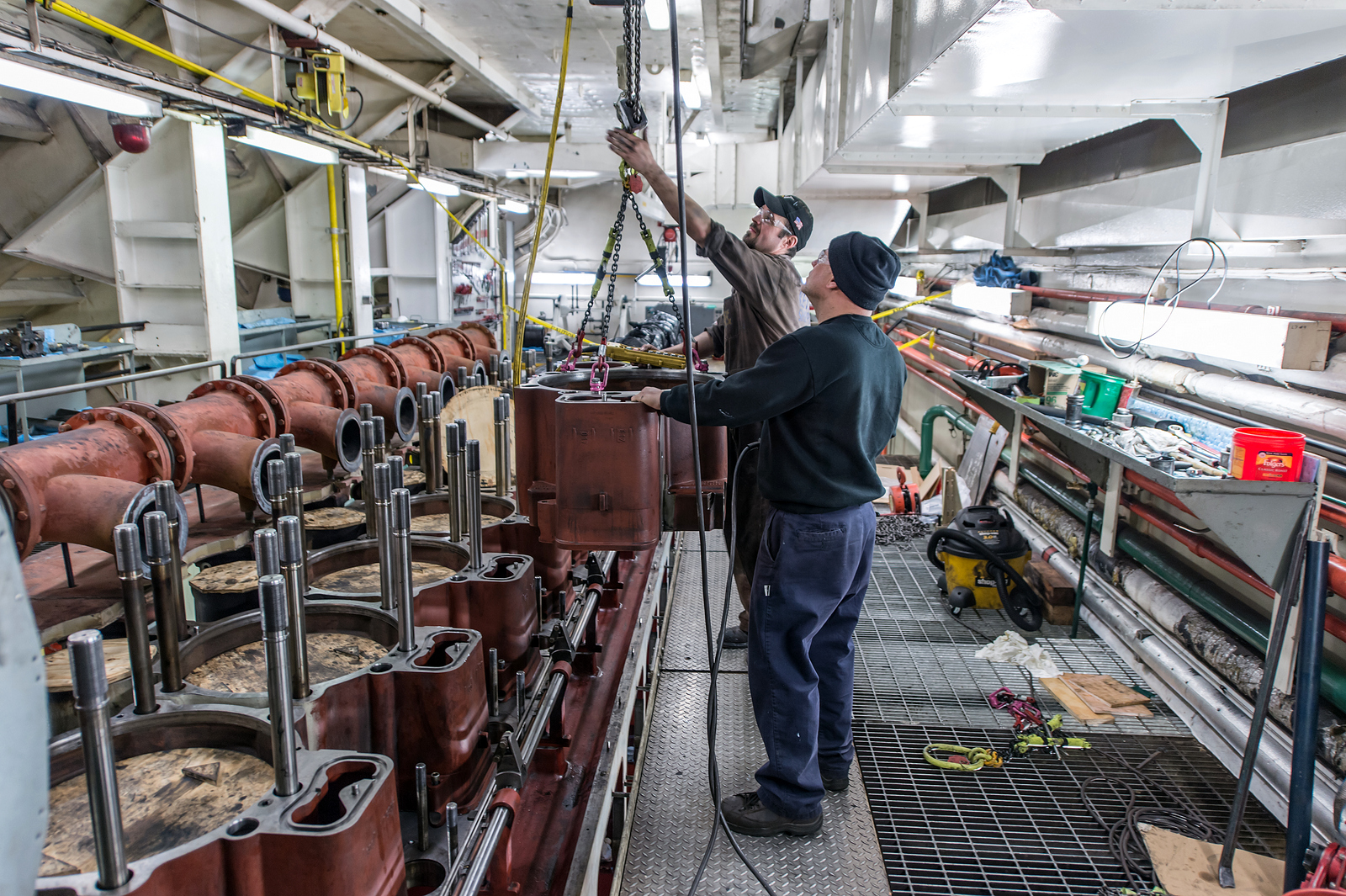
Story and photos contributed by Duluth Seaway Port Authority
U.S.-flag vessel operators on the Great Lakes have committed more than $110 million to maintain and modernize their vessels in 2016.
The investment includes about $60 million for typical winter lay-up maintenance and repair work plus another $50 million in projects that involve repowering vessels or installing exhaust scrubbers.
Fraser Shipyards in Superior, Wisconsin, completed several repair and maintenance projects on vessels in port this winter and is in the midst of a major repowering project aboard the Herbert C. Jackson.
The Jackson arrived at the Superior facility on Dec. 11, its final journey as a steamship. The Jackson, the last steam-powered ship in Interlake Steamship Co.’s fleet, is being converted to a highly automated diesel propulsion system. Work on the Jackson is expected to take another two months, with dock and sea trials tentatively set for June.
The conversion represents the final phase of a 10-year, $100 million modernization effort. The revamped ship will include new, cleaner technology, according to Interlake President Mark W. Barker.

The repowering is estimated to reduce the Jackson’s emissions of particulate matter by 35 percent, carbon dioxide by 57 percent and sulfur oxides by 63 percent.
The Great Lakes Fleet’s steamship, the John G. Munson, is undergoing a similar repowering project at Fincantieri Bay Shipbuilding in Sturgeon Bay, Wisconsin. Two other U.S.-flag vessels were fitted with exhaust gas scrubbers: the James R. Barker and the Lee A. Tregurtha.
The investment is part of a commitment to keep Great Lakes shipping vessels safe and efficient, and reduce their carbon footprint, says James H. I. Weakley, president of the Lake Carriers’ Association, which represents U.S.-flag vessel operators on the Great Lakes.

The 2016 shipping season on the Great Lakes began March 2 with the tug/barge unit Dorothy Ann/Pathfinder, which loaded 14,600 tons of iron ore at Cleveland Bulk Terminal for delivery to ArcelorMittal Cleveland at the end of the navigable portion of the Cuyahoga River in Ohio.
The locks at Sault Ste. Marie, Michigan, are due to open on March 25 and iron ore, coal and grain will begin flowing from Lake Superior ports.
In 2015, U.S.-flag Great Lakes freighters moved 87.2 million tons of cargo, a decrease of 3 percent compared to 2014.
Lake Carriers’ Association represents 15 American companies that operate 56 U.S.-flag vessels on the Great Lakes and carry iron ore and fluxstone for the steel industry, aggregate and cement for the construction industry, coal for power generation, as well as salt, sand and grain. Collectively, these vessels can transport more than 100 million tons of cargo per year.





